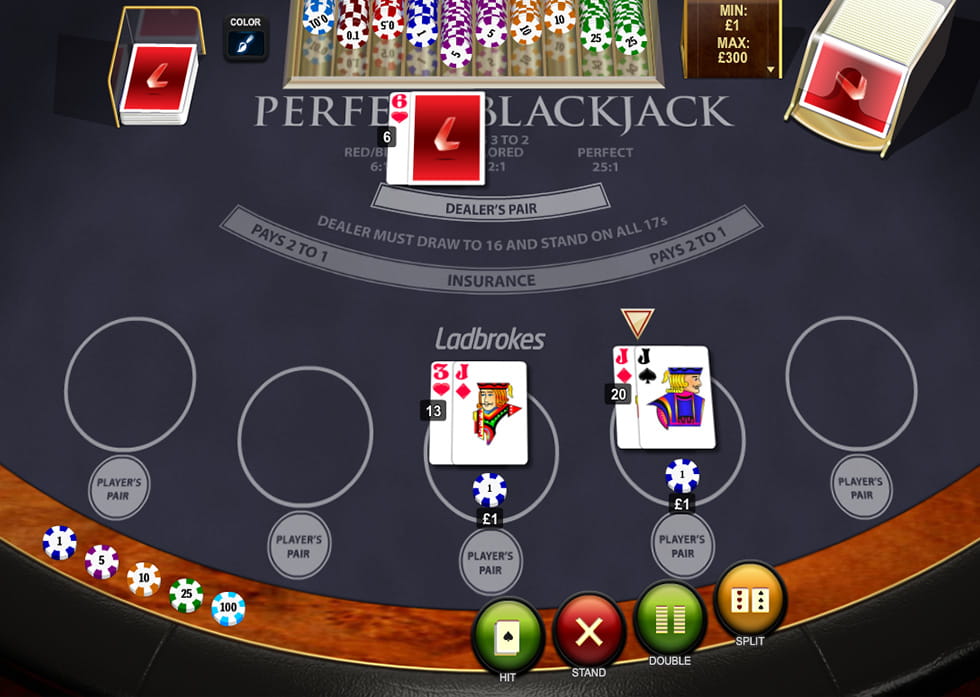Blackjack players have a soft hand when one of the cards is an ace valued as eleven, meaning that they won’t go bust next time they take an extra card. The reason for it is that any other card in the deck will either be equal or less than twenty one and there is no chance for players to go over it. Blackjack Insurance Example. If you're playing blackjack where the dealer must stand on soft 17, then insurance is only really worth taking if you have 18, 19 or 20, as otherwise your hand will likely not be strong enough to beat the dealer anyway.

In blackjack, face cards make up just over 23% of the cards in one deck (12 face cards in a standard 52-card deck). They are valued at 10 points each and are highly favourable in any game of 21. FACE-DOWN BLACKJACK Face-down blackjack is the version of 21 where everyone’s cards are dealt face down. The following blackjack abbreviations and acronyms are used throughout this book and are typical of those used in the literature. When evaluating a game, you should assume Las Vegas Strip rules which include double on any first 2 cards, re-splits to 4 hands, dealer stands on soft-17, insurance allowed and, of course, a natural blackjack pays 3.
An Introduction to Hard and Soft Blackjack Hands
The game of blackjacks is finally about the different hands, and there are two basic types of hands – hard and soft hands. You may be asking yourself a number of questions, from the elementary (‘so what are blackjack hands?’, what are the hard and soft blackjack hands’?) to other questions (‘how do they differ from each other?’).
Often when you play blackjack, you will come across the usage of the term ‘hand’, and variations, such as ‘hard hand’ and ‘soft hand’. Before getting into what are hard and soft blackjack hands, you must understand that the key to both these types of hands is the ace.



Blackjack Soft Hands Trainer
Knowing about hard and soft hands is important because only then will you be able to formulate the proper strategy when you play your hand. This is apart from the fact that the concept of soft and hard hands also influences the dealer’s game, regarding when to hit or stand, for instance.
Hard and Soft Hands – What is a Soft Blackjack Hand?
As mentioned earlier in this article, the key to both the hard and soft blackjack hands is the ace. So what is a soft blackjack hand? The soft blackjack hand is basically a hand that has an ace. In the soft blackjack hand, the ace has a value of 11. These are the two key elements in the soft blackjack hand – the presence of the ace and its attached value. There is one other thing about the soft hand that you will learn next.
When you compare the hard and soft blackjack hands, the soft hand gives you an advantage in terms of card options. You can add a third card to a soft hand and still be confident of not going bust. Take a look at the following example to understand this better.
Suppose you have a soft hand comprising an ace, which counts as an 11, and a 6 (this hand is also called the ‘soft 17’). Normally, if you now drew a card that brought your total count higher than 21, say a 5, you would lose. However, in the case of the soft blackjack hand this is not the case. In such a scenario, the ace would now count as just 1 and you are safe!
Hard and Soft Hands – The Hard Blackjack Hand
/winning-blackjack-hand-on-casino-table-520257696-58979c263df78caebc19a6e7.jpg)
Blackjack Soft Hand
A hard blackjack hand differs from a soft hand in two aspects primarily. First of all, a hard hand does not necessarily need to have an ace; it may have one, but it is okay even if it doesn’t have one. The second point of difference is in the value of the ace – the hard hand ace has a value of just 1, and that value is inflexible, unlike in the soft hand.
Soft Meaning In Blackjack Card Game
Basically, between the hard and soft blackjack hands, it is the flexibility of the soft hand that gives it an edge over the hard hand even when it comes to the strategy charts.